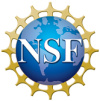About Us
- Details
- Published on Thursday, 18 March 2010 23:26
The Computational Infrastructure for Geodynamics (CIG) develops and disseminates community-accessible software for the geodynamics research community. CIG software supports a variety of geodynamic research from mantle and core dynamics, to crustal and earthquake dynamics, to magma migration and seismology. CIG is a community-driven organization that is committed to developing and maintaining the geodynamics community through community participation across this research spectrum. CIG provides:
- Reusable, well-documented geodynamics software that keeps pace with developments in computational technology;
- Software building blocks for geodynamics from which state-of-the-art modeling codes can be effectively assembled;
- Strategic partnerships with the larger world of computational science and geoinformatics to ensure best practices in developing community-specific tool kits for scientific computation in solid-Earth sciences;
- Specialized training and workshops and other community activities for both the geodynamics and larger Earth Science communities.
Download CIG logos here.
About this Website
This web site is a resource for research, education and collaboration in your science area. It hosts various resources which will help you learn about your science area, including Webinars, Tutorials, Teaching Materials, and more. These resources come from contributors in our scientific community, and are used by visitors from all over the world.
Most importantly, https://geodynamics.org offers live Simulation/Modeling Tools which you can access from your web browser, so you can not only learn about but also simulate your science area. *** COMING SOON
Join Us
- Create your own account. It's free and will give you access to our online simulation tools and other features.
- Create your own private user group and collaborate privately with students and colleagues that you invite.
- Become a contributor by uploading your own presentations and simulation tools for others to share.
- Ask a question in our community forum, and let the community help you out.
FUNDING

CIG is supported by the U.S. National Science Foundation.
This website's content is based upon work supported by the National Science Foundation under Grant No. EAR-0949446 & 1550901. Any opinions, findings, and conclusions or recommendations expressed in this material are those of the authors and do not necessarily reflect the views of the National Science Foundation
